
A late post this month – but the silver lining is that the latest renewable generation values have just been published and are included here.
January saw overall generation stabilise just above FY19 levels and commence a recovery. Power from coal also levelled off, but not before reaching a 26,000 GWh deficit relative to the first 10 months of the previous financial year. There is no prospect of it climbing back to zero before the end of March, meaning that an absolute decline in coal-fired generation in FY20 will be one of this year’s most notable features.
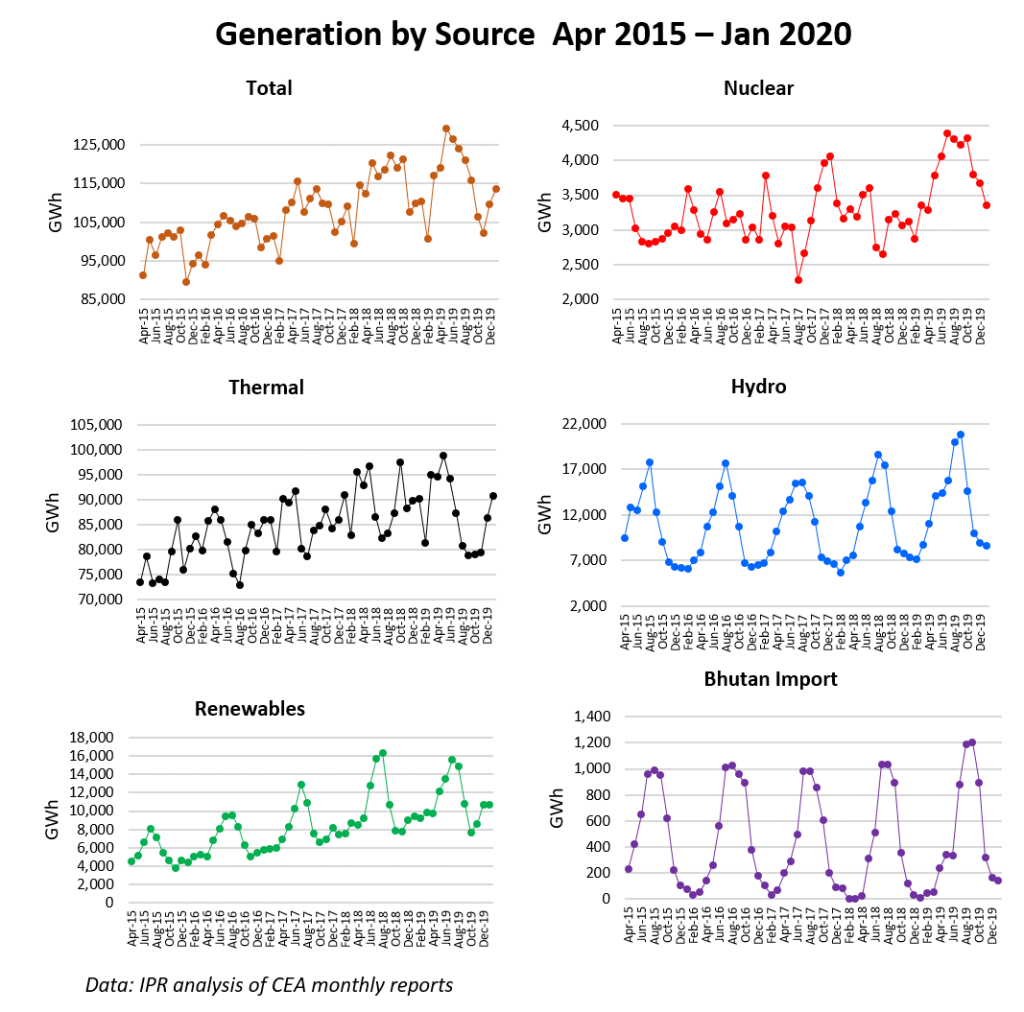
The relative trends for power from coal compared to other sources is clearer in the 12-month average data. It is 21 months since coal-fired power was last averaging the current levels of below 88,000 GWh. By contrast, hydro generation reached at least a four-year high and renewables (mostly solar and wind) were at both an absolute record maximum of over 11,000 GWh per month averaged over 12 months, and a highest-ever 9.56% share of total grid energy, edging ever closer to the 10% level that former World Coal Association CEO Benjamin Sporton forecast wouldn’t be reached until 2040 (paywall).
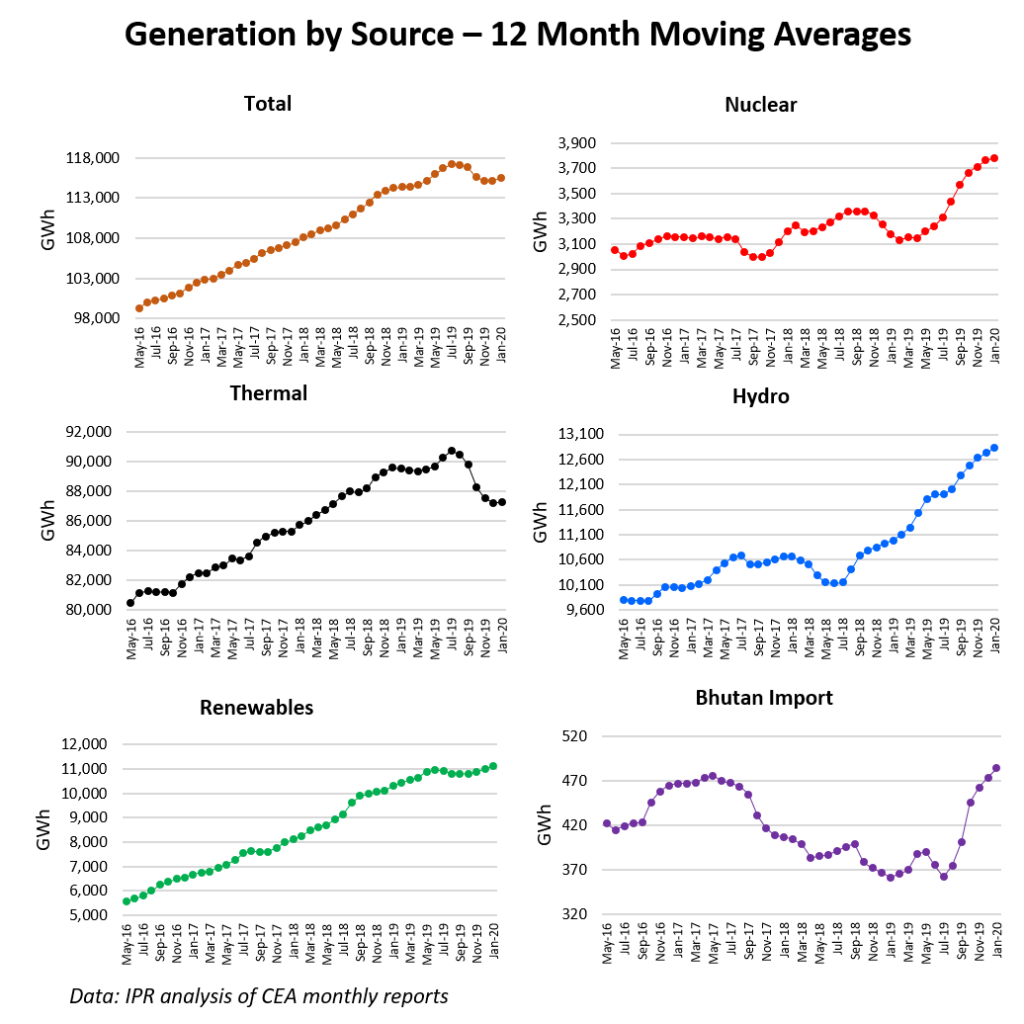
January is near an annual low point for wind, and therefore total renewable generation. In consequence it may not seem like a particularly interesting month to report on – especially after a six-month period of renewables in the doldrums. But it’s worth noting that at the end of January, monthly solar generation (averaged over 12 months) stood at a record 4,162 GWh – 10 times higher than the comparable figure in May 2015, the beginning of this data series.
This order of magnitude change, in just under six years, would see solar alone reach about 40% of current total generation on a year-round average basis if repeated in the next ten. This is not what IPR is forecasting – there are too many technical, policy and economic factors at play – but it illustrates the speed and extent of solar’s incursion into India’s electricity grid.
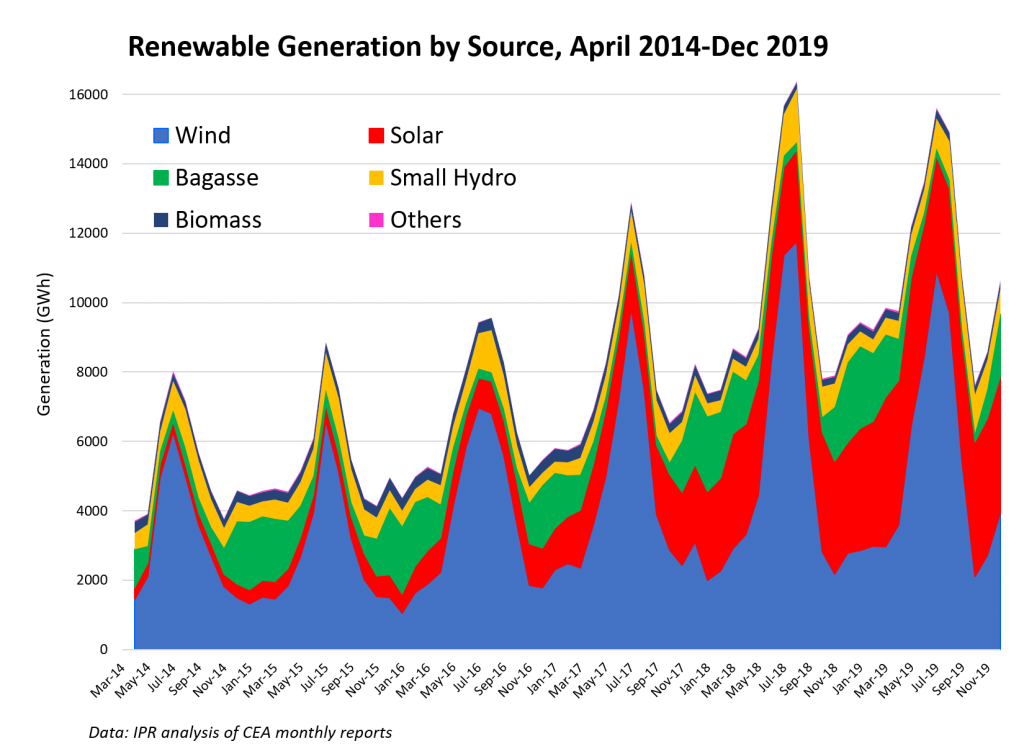
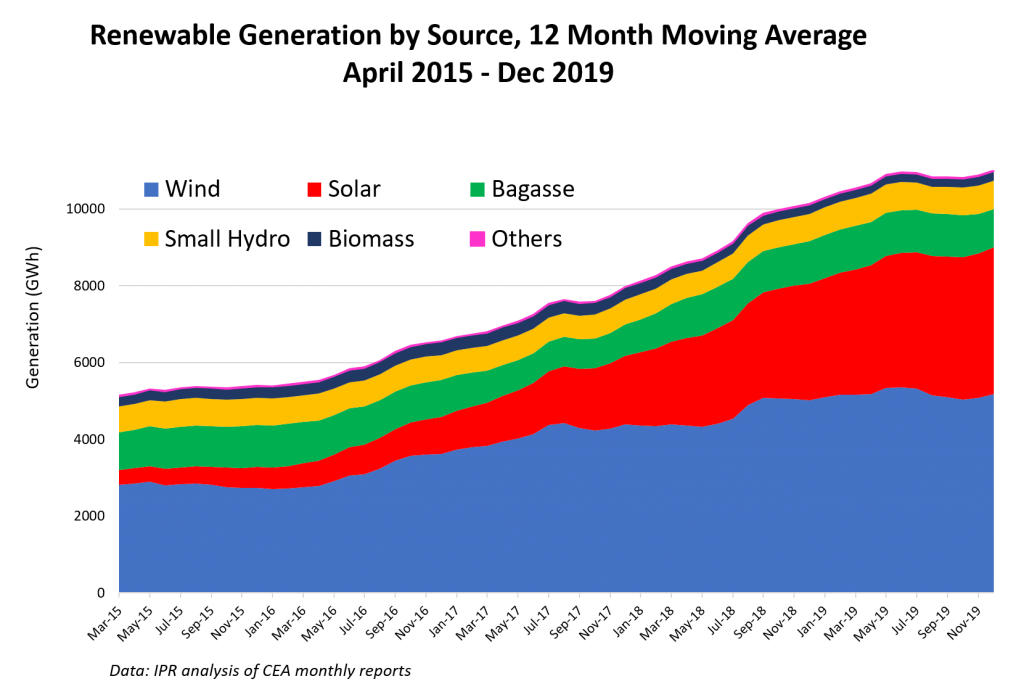
Renewable additions, mostly in the private sector, in Rajasthan and Gujurat and in solar, combined with thermal retirements in Maharashtra and West Bengal, slightly widened the gap between net renewable and thermal capacity additions in January.

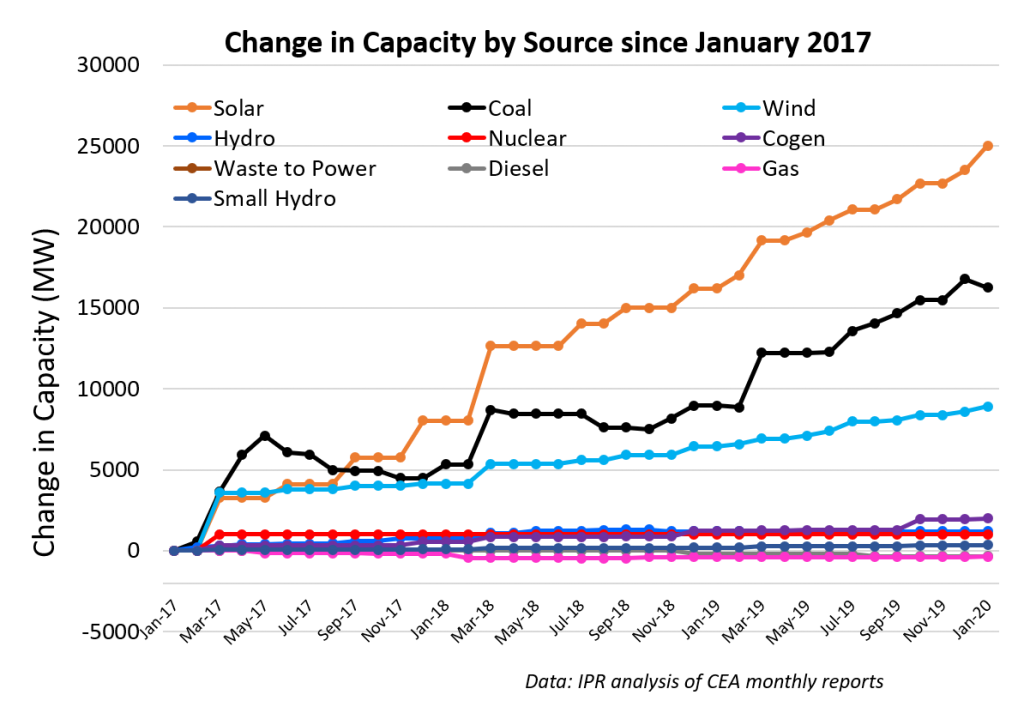
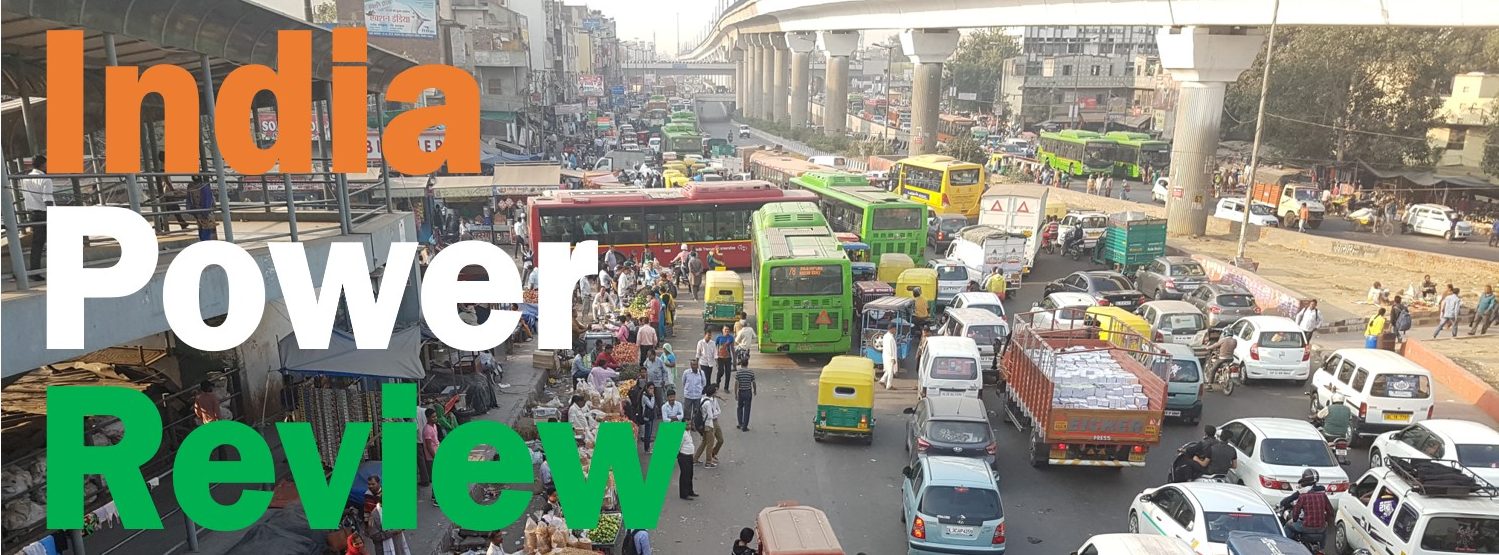
Be the first to comment